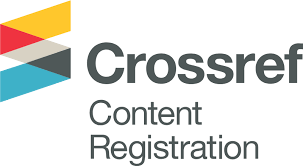DEVELOPMENT OF A MODEL FOR PREVENTION AND PROBLEM-SOLVING ACTIVITIES IN THE STUDENT CARE SYSTEM OF SMALL SCHOOLS UNDER THE CHAIYAPHUM SECONDARY EDUCATIONAL SERVICE AREA OFFICE USING USER EXPERIENCE RESEARCH
DOI:
https://doi.org/10.64186/jsp1626Keywords:
Model, Prevention and problem-solving activities , Student care system , Small schoolsAbstract
This study aimed to 1) examine the current and desired conditions of prevention and problem-solving activities within the student care system of small schools under the Chaiyaphum Secondary Educational Service Area Office 2) develop a model for these activities and 3) evaluate the quality of the proposed model. A mixed-methods research design was employed, structured into three phases. In Phase 1, a user experience study was conducted using semi-structured interviews with 12 school administrators and teachers, selected through purposive sampling. Phase 2 focused on developing a model for prevention and problem-solving activities, with its quality assessed by 10 experts, also chosen through purposive sampling. Phase 3 involved evaluating the model’s quality through user assessments, with a sample of 36 administrators and 165 teachers selected using stratified random sampling. The findings revealed that 1) the current implementation of prevention and problem-solving activities in small secondary schools is diverse but lacks systematic organization in certain aspects 2) the developed model was rated at the highest quality level ( = 4.93, S.D. = 0.25), with no statistically significant differences in opinions between theoretical and practical experts at the 0.05 significance level and 3) the overall quality assessment by users also indicated the highest level (
= 4.66, S.D. = 0.49).
References
Boonchom Srisard. (2002). Basic Research (7th Edition). Bangkok: Suweeriyasarn.
Chatchawan thongdeelert. (2012). Small School : Problems and Solutions. Journal of Research
and Curriculum Development, 2(1), 1-7.
Equitable Education Fund. (2024). Three Groups of Children That Thailand Zero Dropout Must Find. Retrieved on October 3, 2024, from https://shorturl.asia/s6S4k
Jakrapob Newamat. (2017). Development of a Student Support System Management
Model for Tak Technical College under the Office of the Vocational Education Commission. Tak Technical College, Tak.
Jatuphum Ketchatturat. (2022). Evaluation Methodology. Khon Kaen: Khon Kaen University.
Krejcie, R. V., & Morgan, D. W. (1970). Determining sample size for research activities.
Educational and Psychological Measurement, 30(3), 607–610.
Mann, H. B., & Whitney, D. R. (1947). On a test of whether one of two random variables is
stochastically larger than the other. Annals of Mathematical Statistics, 18, 50–60.
Montri Sangchum. (2022). Development of a Student Support System Management Model
Based on an Individual Student Database for Ranong Kindergarten School. Journal of Learning Reform, 5(1), 17-33.
Narongchai Sapaiwan. (2003). Follow-up on the Implementation of the Student Support
System at Mahachai Pittayakharn School, Maha Sarakham Province. Independent Study Report. Master’s Thesis, Khon Kaen University.
Ploenphit Singkham. (2017). Development of Implementation Guidelines for the Student
Support System in Schools under the Secondary Educational Service Area Office 28. Master’s Thesis in Educational Administration. Mahasarakham University.
Ranthitiya Saiyarat & Chalong Chatrupracheewin. (2019). Study of Problems and
Development Guidelines for the Implementation of the Student Support System in Small Schools under the Phitsanulok Primary Educational Service Area Office 1. Phetchabun Rajabhat Journal, 21(2), 15-34.
Stern, C. (2014). About the CUBI UX Model. Retrieved on October 12, 2024, from http://www.cubix.com/about.php.
Teera Runcharoen. (2007). Models and Components of Models. Lecture Notes for the Seminar on Educational Administration. Ubon Ratchathani: Ubon Ratchathani Rajabhat University.
Thai Youth Institute. (2023). Thai Youth Institute and Thai Health Promotion Foundation
(ThaiHealth) Release Survey Results on Juvenile Drug Offenders' Behavior on the Occasion of the International Day Against Drug Abuse and Illicit Trafficking 2023, Highlighting "Cigarettes and E-cigarettes as Gateways to Drug Addiction." Retrieved on September 15, 2024, from https://n9.cl/t37gfu.
Downloads
Published
How to Cite
Issue
Section
Categories
License
Copyright (c) 2025 Journal of social studies perspectives

This work is licensed under a Creative Commons Attribution-NonCommercial-NoDerivatives 4.0 International License.
The article is published under the Creative Commons Attribution-NonCommercial-NoDerivatives 4.0 International (CC BY-NC-ND 4.0) license, which allows others to share the article while giving appropriate credit to the author. It prohibits the use of the article for commercial purposes or the creation of derivative works. Any other reuse or reproduction requires permission from the journal.









